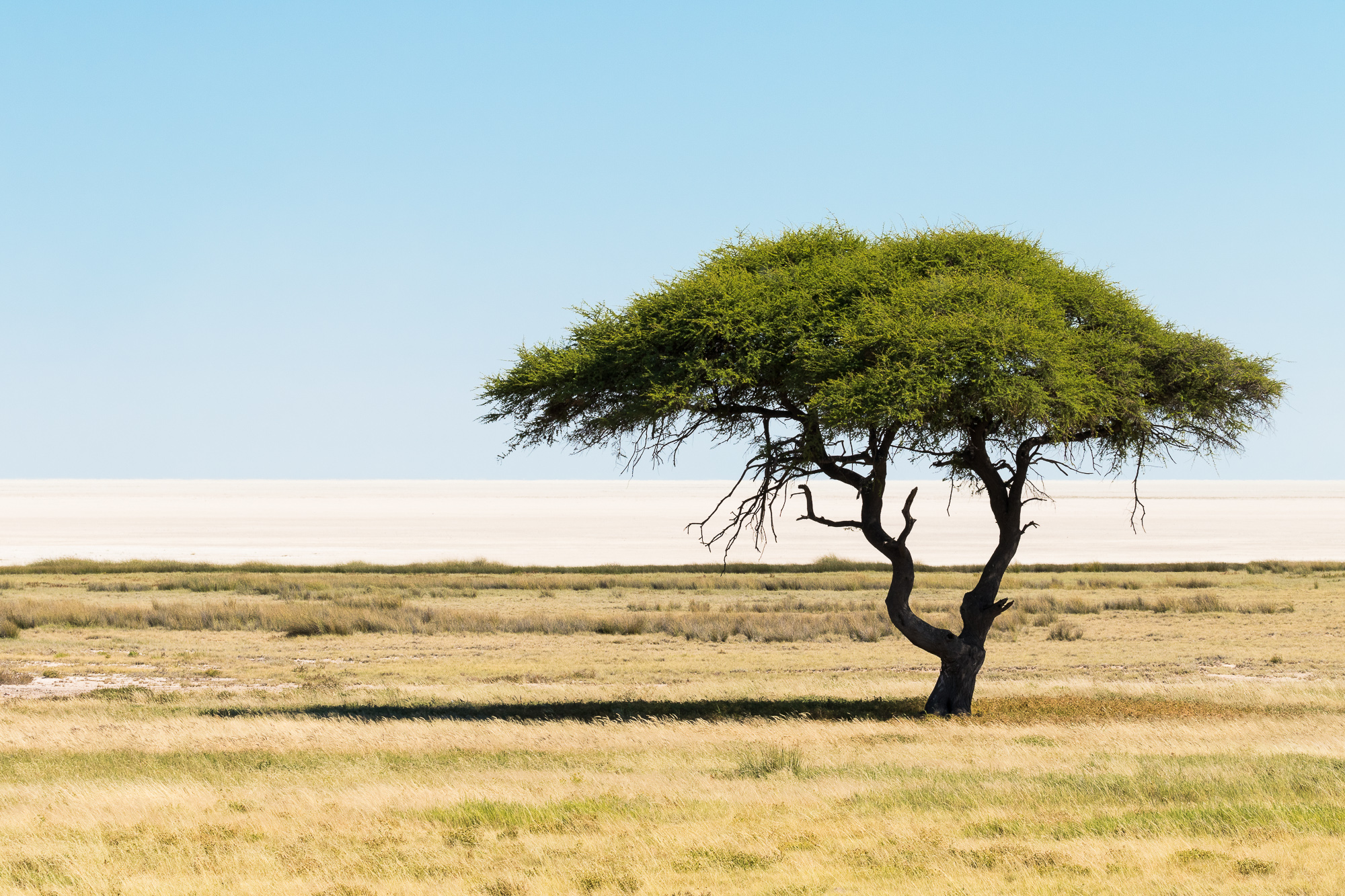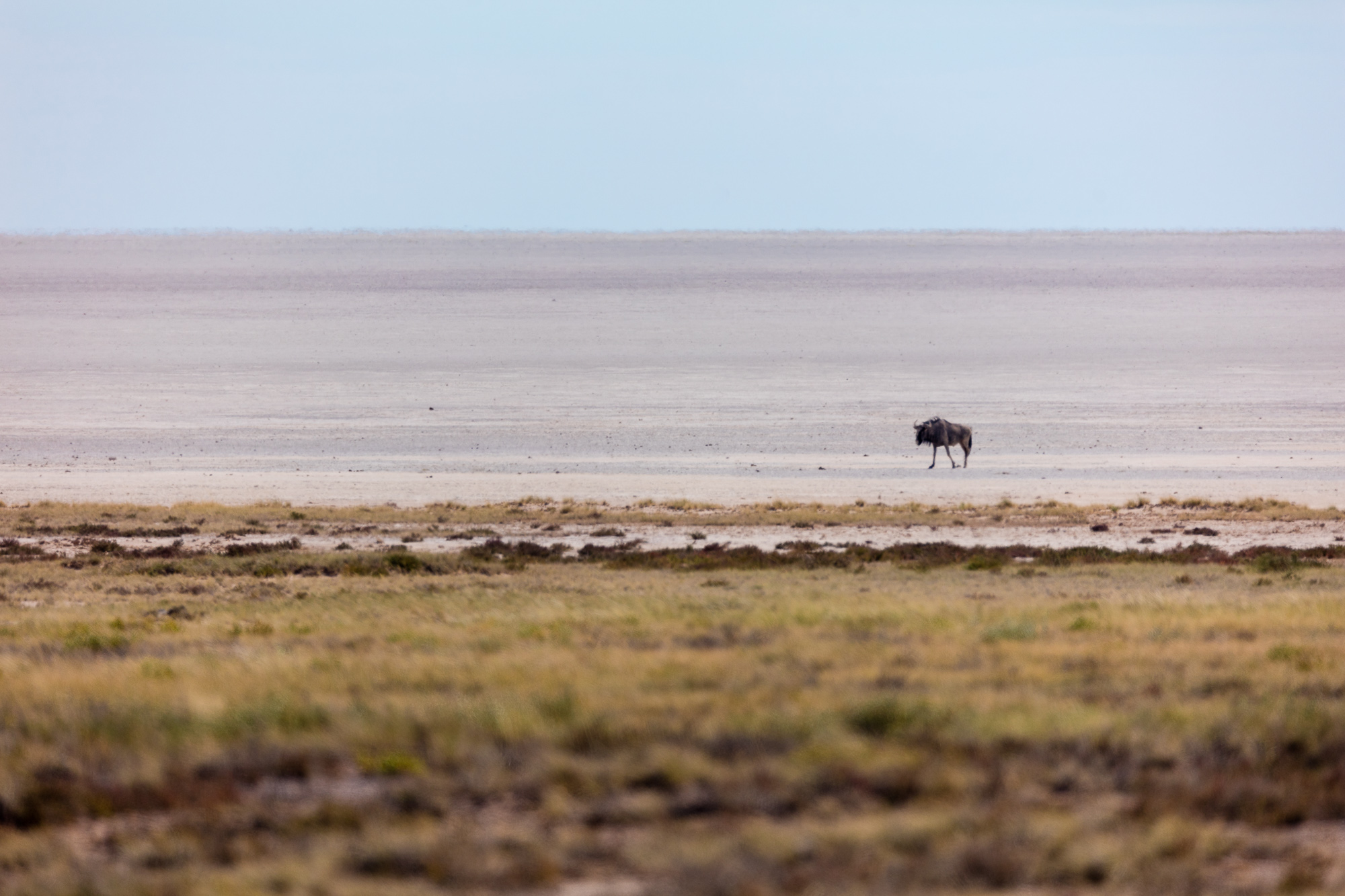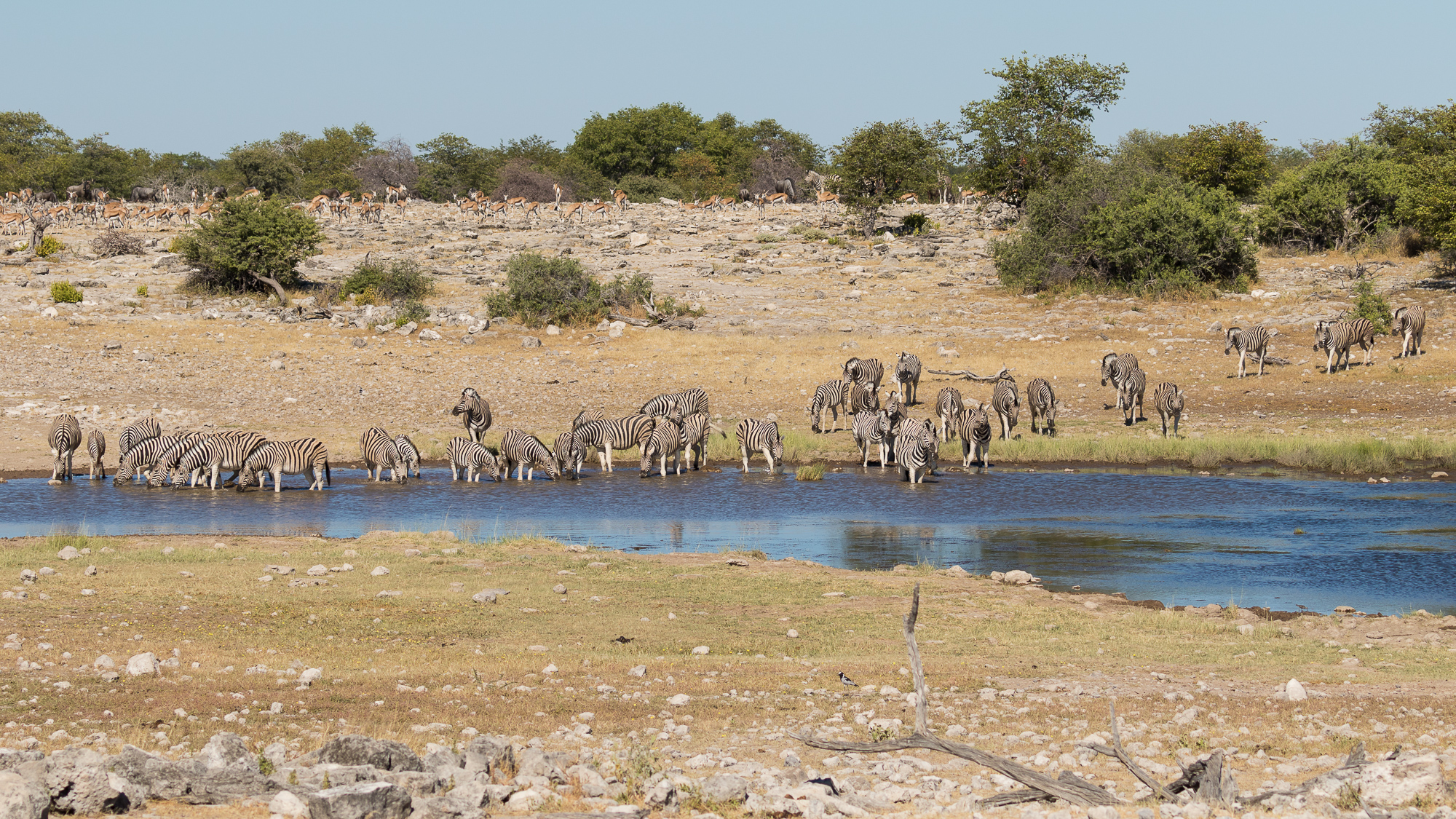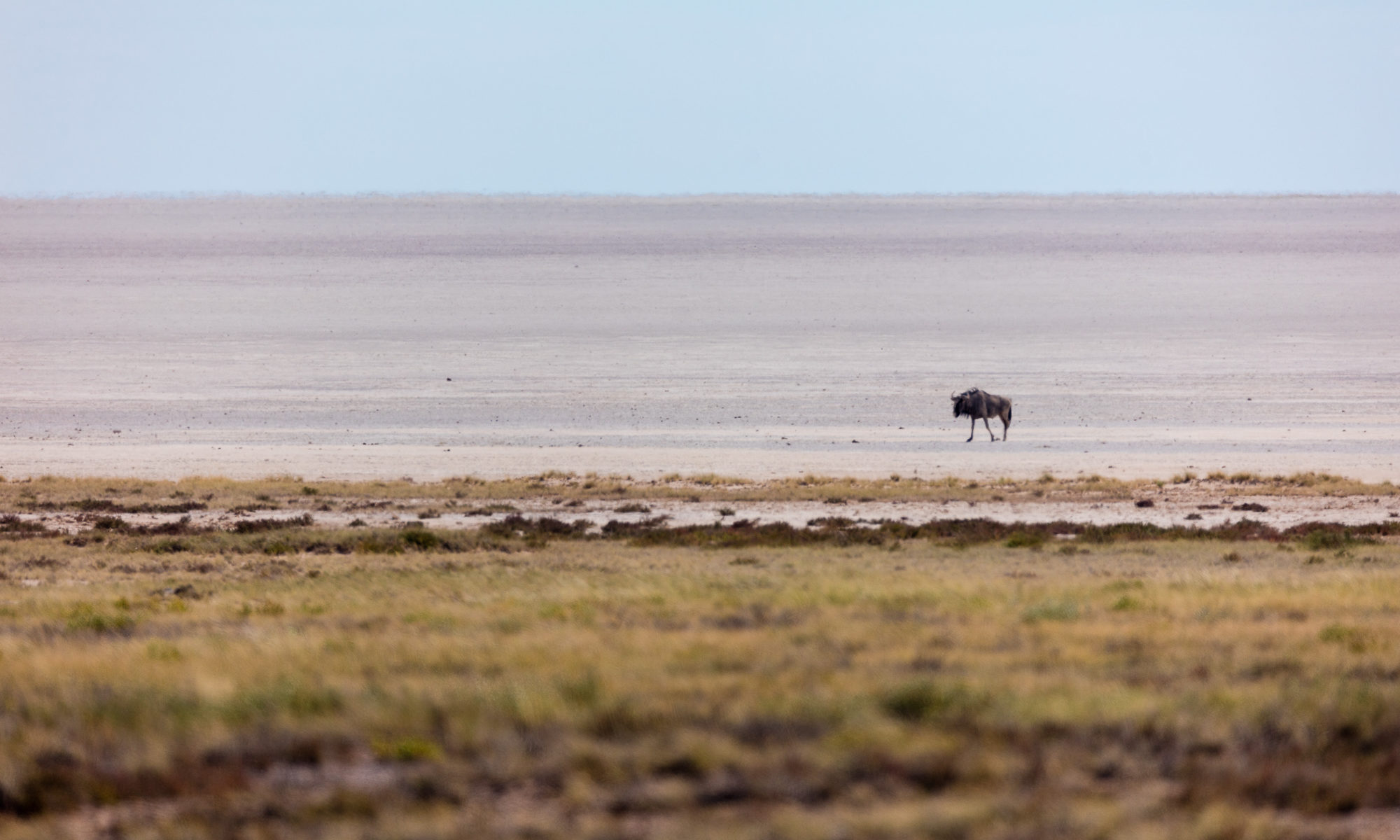
The Etosha Pan is a large dry lake bed in Namibia, which due to heavy mineral deposits forms a dry salt pan. The name “Etosha” comes from an Ndonga word meaning “great white place”. While the pan rarely sees water, it is surrounded by savanna and sparse forest, teeming with wildlife. The pan is 75 miles long and just shy of 3,000 square miles. Here you can see the white expanse of the pan stretching into infinity.

Occasionally the wildlife that lives at the edges of the lake bed wander out onto it to gather surface minerals, making up a portion of their diet. A blue wildebeest is dwarfed by the vastness of the pan.
The lake was fed by a large river about 16,000 years ago when glacial melt caused the formation of many such rivers. At some point tectonic plate movement changed the course of the river, and the pan dried up to its current state. The only time it sees a few centimeters of water is due to heavy rains, but this is a seldom occurrence.

The area surrounding the pan is dotted with waterholes which support a wide variety of wildlife. This area is protected within the boundaries of Etosha National Park, which completely surrounds the pan. Although I only spent one full day here, that glimpse of wildlife photographic possibilities will surely draw me back.

